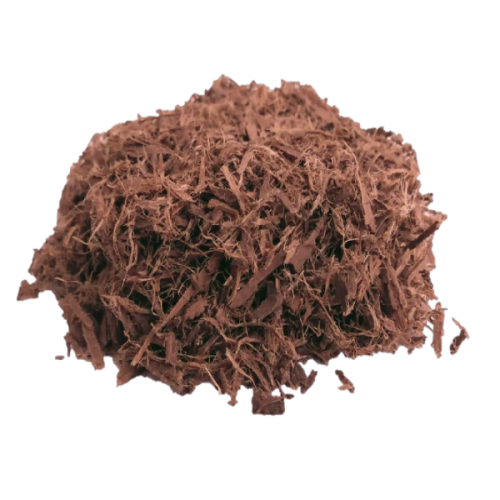Mimosa Hostilis Root Bark retains a big put in traditional methods and contemporary botanical applications. This article explores the characteristics, origins, and common queries encompassing this amazing plant product, with a particular target the prized Brazillian Mimosa Hostilis Root Barks.
Exactly what is Mimosa Hostilis Root Bark?
Mimosa Hostilis, scientifically called Mimosa tenuiflora, is often a perennial tree native on the northeastern region of Brazil and portions of Mexico. The root bark of this tree continues to be made use of for centuries by indigenous communities for different functional and classic uses. The inner root bark has noteworthy concentrations of tannins, alkaloids, as well as other phytochemicals that contribute to its distinct properties and applications.
The tree by itself is remarkably resilient, able to surviving in inadequate soils and drought circumstances. This hardiness contributes into the sturdy mother nature in the bark and its chemical profile. When harvested sustainably, the outer root bark is thoroughly divided to access the dear inner bark, which is then dried and well prepared for use.
Brazilian Mimosa Hostilis Root Bark: The Gold Standard
When speaking about top quality in Mimosa Hostilis merchandise, the Brazillian Mimosa Hostilis Root Barks are frequently regarded excellent during the botanical sector. Various elements contribute to this reputation:
Optimal Rising Disorders
The particular soil composition, weather, and ecosystem of Brazil's northeastern region build ideal conditions for Mimosa tenuiflora to acquire its whole chemical possible. The mineral-prosperous soils and individual pattern of rainfall and sunlight During this place surface to reinforce the concentration of Lively compounds in the basis bark.Classic Harvesting Knowledge
In areas wherever Mimosa Hostilis is applied typically, harvesters have formulated refined techniques for sustainable harvesting that preserves the two the tree along with the potency of your bark. This information, passed down by means of generations, makes certain that the bark is gathered at the correct time of calendar year and processed using methods that sustain its integrity.Unique Actual physical Characteristics
Brazilian Mimosa Hostilis Root Bark normally shows a abundant reddish-brown to purple inner bark by using a fibrous, dense texture. The visual traits normally function an Preliminary indicator of quality, with skilled people recognizing the distinctive appearance of bark from this area.
Prevalent Applications and Employs
The applications of Mimosa Hostilis Root Bark span equally regular and fashionable contexts, while It is important to be familiar with the legal position of those employs varies by country and jurisdiction.
Regular Craft and Apply
Indigenous communities have Traditionally utilised Mimosa Hostilis Root Bark for building natural dyes for textiles, Along with the bark manufacturing attractive shades of purple, burgundy, and deep brown. The tannin-loaded Homes also manufactured it beneficial for leather-based tanning along with other realistic purposes.Fashionable Botanical Analysis
Modern desire in Mimosa Hostilis Root Bark extends to various fields of botanical investigate, specially finding out its chemical composition and possible purposes. Scientists have determined several fascinating compounds in the bark that warrant even further scientific investigation.Horticultural and Agricultural Makes use of
In permaculture and sustainable agriculture, Mimosa tenuiflora is valued for a nitrogen-correcting species that can improve soil quality. The bark by itself, when processed, can be used as a organic mulch or soil Modification in particular agricultural contexts.Excellent Assessment and Identification

For all those working with Mimosa Hostilis Root Bark, knowledge tips on how to evaluate high quality is vital. Substantial-top quality substance, especially authentic Brazillian Mimosa Hostilis Root Barks, commonly displays specified traits:
The visual visual appearance should really clearly show a transparent difference amongst the outer and internal bark, With all the inner bark exhibiting deep, vivid shades. The material must have a characteristic earthy, somewhat sweet aroma, free from musty or moldy notes. When processed, the bark should generate a great powder while preserving its fibrous composition until eventually grinding. Thoroughly dried bark really should be brittle although not dusty, indicating proper moisture written content.
Commonly Requested Concerns (FAQs)
one. Exactly what is the difference between Mimosa Hostilis Root Bark from Brazil along with other regions?
Brazilian Mimosa Hostilis Root Bark is generally thought of superior mainly because of the optimum rising Brazillian Mimosa Hostilis Root Barks situations in northeastern Brazil, which lead to bigger concentrations of Lively compounds. The traditional harvesting procedures used With this region also contribute to the overall excellent and potency of the ultimate product.2. How really should I keep Mimosa Hostilis Root Bark to keep up its good quality?
Store the bark in a interesting, darkish, and dry position within an airtight container. Safety from light, humidity, and Serious temperature fluctuations might help protect the bark's chemical integrity and prevent degradation of its Energetic components.3. Is Mimosa Hostilis an endangered species?
No, Mimosa tenuiflora is not now listed being an endangered species. In actual fact, It is known for its resilient expansion and talent to thrive in complicated situations. On the other hand, responsible harvesting techniques remain essential to make sure the sustainability of wild populations.four. Am i able to develop Mimosa Hostilis beyond its native habitat?
Even though Mimosa tenuiflora thrives ideal in its indigenous tropical climate, it could be cultivated in very similar environments. The tree necessitates well-drained soil, an abundance of sunlight, and safety from frost. However, the chemical profile of cultivated specimens could differ from wild-harvested Brazilian product.five. What's the authorized standing of Mimosa Hostilis Root Bark?
The lawful position differs appreciably by region and jurisdiction. In a few places, the raw bark is lawful to have, even though in Many others, unique extracts or preparations could possibly be controlled. Usually investigation and comply with area regulations and polices prior to acquiring or applying any botanical substance.Being familiar with Mimosa Hostilis Root Bark, significantly the top quality Brazillian Mimosa Hostilis Root Barks, calls for appreciation of its botanical characteristics, classic context, and correct purposes. Whether for analysis, craftsmanship, or botanical study, this remarkable plant materials continues to generally be a matter of fascination across several fields, although often in suitable authorized and moral boundaries.